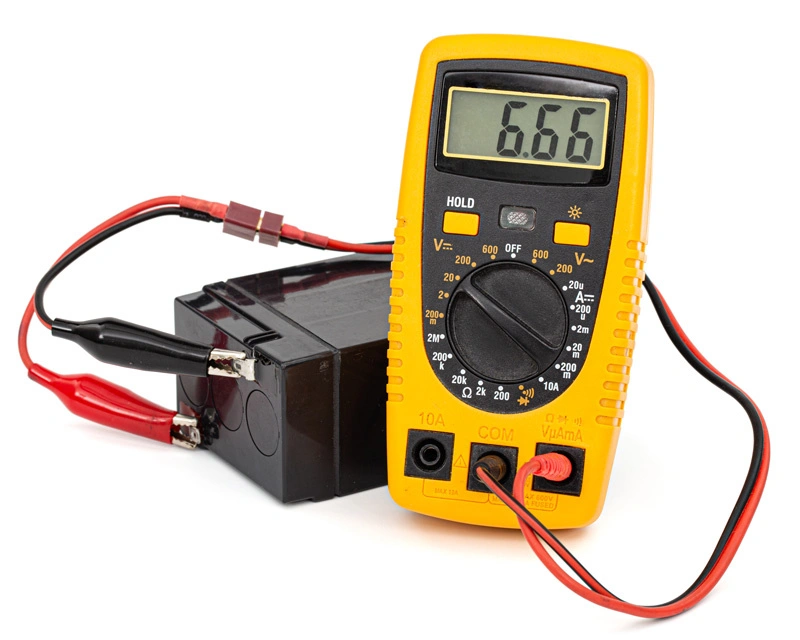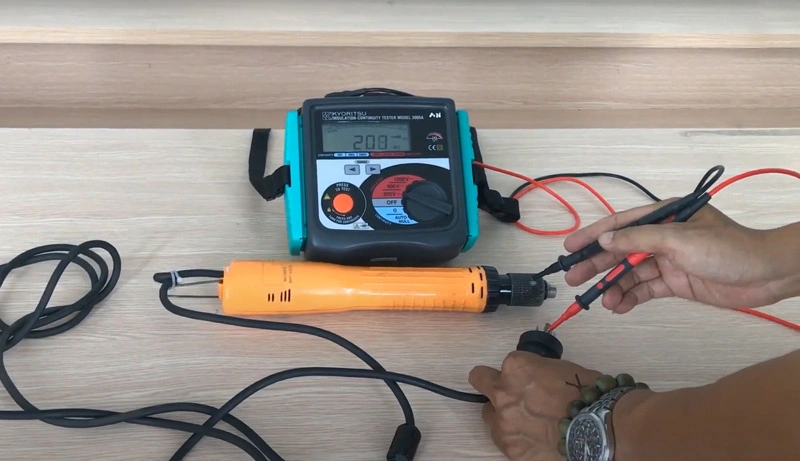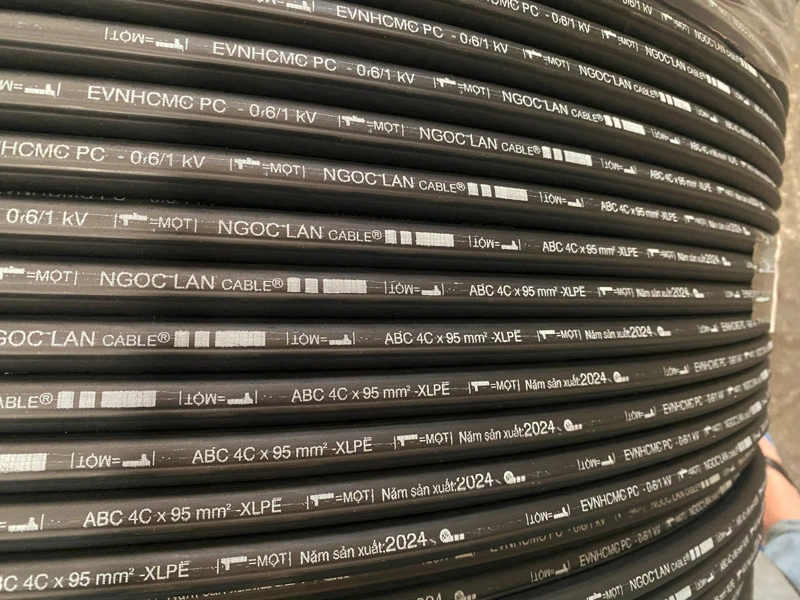Checking the quality of electric cables before putting them into use is extremely necessary, but not everyone pays attention to this issue. So how important is this work in the operation and construction of electrical systems? Let's find out the reasons and implementation steps in the following article.
1. Why do we need to check the quality of electric cables before use?
Accidents related to electrical systems such as fire, explosion, and electric shock always pose many dangers to people and property. Recent statistics from the Department of Fire and Rescue Police (Ministry of Public Security) show that in the period from 2012 – 2020, there were more than 27,500 fires, of which about 14,200 cases were caused by electrical system failures (accounting for 51.9%). One significant cause stems from the use of poor quality electric cables.
In addition, using substandard cables also causes many unpredictable consequences for electrical equipment:
- Reduces lifespan, causes equipment to break down quickly
- Increases repair and maintenance costs
- Causes interference, fire and explosion affecting users
To minimize the above risks, the electrical industry has set strict standards for cable quality such as: Vietnamese Standards (TCVN), International Electrotechnical Commission (IEC), Underwriters Laboratories (UL), Canadian Standards Association (CSA) … These standards set out specific requirements on dimensions, materials, voltage resistance, heat resistance … of each type of cable suitable for each application.
Therefore, checking the quality of electric cables according to the correct standards before use is mandatory and urgent to ensure safety and avoid unfortunate consequences that may occur.
2. Tools for testing electric cable quality
Depending on the needs and conditions, we can use the following tools to check the quality of electric cables:
| Tool | Function | Advantages | Disadvantages |
|---|---|---|---|
| Multimeter | Measure resistance, voltage, current | Versatile, easy to use, reasonable cost | Only measures basic quantities |
| Megohmmeter | Measure insulation resistance | Specialized design, high accuracy | High cost |
| Clamp meter | Measure current without disconnecting circuit | Convenient, safe for users | Limited measuring range |
| Thermal camera | Detect hot spots, leakage current | Visual image, easy to locate faults | Expensive, requires expertise |
Depending on the purpose and budget, we can choose to buy the appropriate tool. However, for the convenience of comprehensive and effective inspection, it is recommended to use both a multimeter and megohmmeter. These two devices complement each other, helping to evaluate most of the basic parameters of electric cables.
3. Steps to check the quality of electric cables
3.1 Visual inspection
Visual inspection allows us to quickly eliminate substandard cable sections without the need for measuring equipment. This process includes the following steps:
Step 1: Check the origin, labels
Observe the cable surface carefully, look for information such as: manufacturer, cross-section, rated voltage, year of manufacture… For example: The information on the cable may be: “NGOC LAN CABLE® – 2025 – Cu/XLPE/PVC 3C x 50 mm² 0.6/1kV- 2665 m”
In which:
- NGOC LAN CABLE: Manufacturer
- Cu/XLPE/PVC 3C x 50 mm²: Cable type (copper cable, XLPE insulation, PVC sheath), cross section 3 cores x 50 mm²
- 0.6/1kV: Rated voltage
- 2025: Year of manufacture
Cables without labels or unclear, incomplete information are signs of poor quality and should be eliminated.
Step 2: Check the outer sheath
Carefully observe the cable sheath surface, pay attention to features such as:
- Deep cuts, tears, scratches
- Blistering, cracking
- Discoloration, charring
The above characteristics indicate that the cable may have been damaged by environmental impact, aging or manufacturing defects. Eliminate cable sections with abnormalities.
Bend the cable to check flexibility. Good quality cables are flexibly bendable without cracking.
Step 3: Check the conductor
The copper conductor is in direct contact with the current, so it needs to be made of pure material without impurities. A strong reaction to a magnet is a sign of contamination, possibly containing ferromagnetic materials that cause interference. Good copper cores have a bright, smooth surface.
Count the number of conductor strands, ensure compliance with the manufacturer's standards. If the cable has broken or exposed strands, it should not be used.
Observe the cross-section of the cable core, pay attention to the shape and roundness of the strands. The cable core loses flexibility and is easily broken if the shape is distorted and the strands are flattened.
3.2 Technical inspection
Technical measurements allow for more quantitative and accurate assessment of electric cable quality.
How to measure insulation resistance:
Insulation resistance is an important parameter to evaluate the leakage current blocking ability of insulating materials. The higher the insulation resistance, the better the insulation quality. Measurement steps:
- Use a megohmmeter to measure, strictly follow the equipment operating procedures.
- Select a measuring voltage appropriate to the working voltage rating of the cable (e.g. 500V cable measured at 500VDC)
- Read the insulation resistance result on the screen. The measured result must be greater than the value specified in the standard.
Example: According to TCVN 6610-2, the insulation resistance of a 450/750V PVC single core cable is ≥ 50 MΩ at 20ºC.
- If the measured result is 200 MΩ → the cable meets the requirement
- If the result is lower than 50 MΩ → the cable does not meet the standard, it must be discarded
How to measure dielectric strength:
Dielectric strength evaluates the ability of insulating materials to withstand high voltages before being punctured. This is an important indicator to ensure the safety and reliability of electric cables.
- The test is usually performed by specialized equipment such as a dielectric strength tester.
- The cable is placed between 2 electrodes, then the voltage is gradually increased as specified. The process takes place for 10 – 20 seconds.
- Record the breakdown voltage value, compare it with the standard value (usually 2-3 times the rated voltage)
- The cable meets the requirement if the breakdown voltage is greater than the standard value.
Example:
- According to TCVN 6610-3, 450/750V PVC wire must withstand 2500V AC for 5 minutes without being punctured.
- If the wire is punctured below 2500V → discard.
Note: Dielectric tests have the risk of fire and explosion, so they must be conducted by professional staff with appropriate protective equipment.
How to measure conductor resistance:
Conductor resistance directly affects the ability to transmit electrical energy. The lower the resistance, the less power loss, the higher the efficiency.
- Use a multimeter at the lowest resistance range (usually 200Ω)
- Place the two test leads at the two ends of the wire to be tested, being careful to expose the cable section between the two measurement points.
- Read the resistance result on the screen, record the value in the minutes
- Based on the cable cross-section, calculate the resistivity (Ω.mm²/m) and compare with the standard value.
Example:
- A 10 mm² cross-section copper cable, 100m long has a measured resistance of 0.15 Ω.
- Resistivity: 0.15 Ω * 10 mm² / 100 m = 0.015 Ω.mm²/m
- The resistivity of copper at 20ºC is ≤ 0.0172 Ω.mm²/m → the cable meets the requirement.
How to measure voltage drop:
Voltage drop on conductors is the cause of power loss as well as degradation of the supplied voltage quality (causing flicker). The voltage drop mainly depends on the conductor resistance, load current and power factor. Use a multimeter on the appropriate AC voltage range:
- Connect the two test leads to the two ends of the wire to be tested under load.
- Read the voltage drop result on the screen, record it in the minutes.
- Compare the result with the allowable value in the standard.
Example:
- The standard allows a voltage drop on the low voltage line of ≤ 5% of the rated voltage.
- Rated voltage 220V, measured voltage drop 12V.
- Relative voltage drop: 12/220 = 5.45% > 5% → wire does not meet the standard.
Thus, the voltage drop measurement helps to evaluate the ability of the conductor under actual working conditions with load.
3.3 Safety check
In addition to technical factors, safety is also an important criterion when choosing electric cables. Some common safety tests include:
Load capacity test
- The conductor must be able to withstand the continuous rated current without overheating (≤ 70ºC with common PVC insulation).
- This test can be performed by passing the rated current through the wire for about 4 hours, then using a contact thermometer to measure the cable surface temperature.
- If the temperature exceeds 70ºC → the wire does not meet the requirements, there is a risk of burning when used for a long time.
Flame retardant test
- Cables used in areas with high risk of fire and explosion (hospitals, apartments, factories…) must have the ability to self-extinguish or prevent flame spread when a fire occurs.
- Common flame-retardant insulating materials include:
- PVC-FR: has the ability to slow down ignition, self-extinguish, limit the spread of flames.
- LSZH: has low flammability, slow burning, low smoke emission and contains no harmful halogens, limits the spread of fire, environmentally friendly.
The flame retardancy of cables is tested by standard methods according to IEC 60332 such as placing the cable in a combustion chamber, measuring the burning time and length, the amount of smoke generated…
Example:
- Flame retardant cables must meet IEC 60332-3 (flame spread prevention along the length).
- Cable in the combustion chamber, after 40 minutes the flame spreads by 2.5m → the cable does not meet the requirement.
To select the appropriate cable for each construction project, it is necessary to clearly understand the safety requirements (load capacity, flame retardancy, interference resistance…) and select the cable type with technical specifications that meet.
4. Notes when buying electric cables
To buy quality cables, you should note a few of the following points:
- Choose a reputable supplier: Prioritize big brands with strict quality management systems, achieving domestic and international certifications such as TCVN, UL, BS…
- Request full certificates: Certificate of conformity, certificate of origin CO/CQ, product technical specifications … are important bases to evaluate cable quality.
- Check anti-counterfeit stamps: Genuine cables must have anti-counterfeit stamps from the manufacturer (spray printing, embossing, …) to distinguish them from fake and poor quality goods.
- Clearly understand the usage requirements: exchange specifics with the technical team to determine the type of cable suitable for the working environment, purpose of use (indoors, outdoors, underground, underwater…), voltage level, equipment capacity.
- Compare prices: Should survey prices at many suppliers for competitive rates. However, do not be tempted by cheap prices to buy adrift cables of unknown origin.
By carefully selecting and thoroughly checking quality, you can absolutely find standard, safe and reliable cables.
5. Frequently asked questions (FAQ) about testing electric cable quality
5.1 How often should electric cable quality be checked?
5.1 How often should electric cable quality be checked?
To ensure safety for the electrical system, periodic inspection and maintenance is extremely necessary:
- For new cables: should be thoroughly checked immediately upon receipt to detect construction defects, transportation damage…
- For cables in use:
- Fixed installation cables (at home, office…): check every 6-12 months or when there are signs of damage.
- Mobile installation cables (welding cables, extension cords…): check before each use as cables are more prone to damage.
- Cables used in harsh environments (near the sea, high temperatures…): check every 2-3 months.
5.2 If a cable is found to be of poor quality, what should be done?
What you need to do if you detect a poor quality cable is:
- If the newly received cable is defective → request the supplier to exchange or refund according to the warranty policy.
- Cables in use but showing signs of poor quality (soft sheath, deformation; resistance exceeds threshold…) → cut off the damaged part, reconnect with a terminal or replace with a new cable depending on the extent.
- If the whole cable reel is defective or the cause is unknown → recall the entire batch, return to the supplier or an independent inspection agency to determine responsibility.
5.3 What are the easily recognizable signs of poor quality cables?
The following signs that you can easily recognize are:
- No label or unclear label.
- Anti-counterfeit stamp is easily peeled off, faded.
- Cable sheath surface has cracks, splits, blisters.
- Cable core has rust stains, reacts with magnets.
However, some deep-seated defects such as high resistance, poor insulation… require measuring equipment to detect. Therefore, strict technical inspection is indispensable.
6. Conclusion
Through the article, we have learned about the importance as well as how to conduct quality inspection of electric cables before use. Whether you are a skilled electrician or a non-specialist, this is also a necessary task, demonstrating the user's responsibility in ensuring safety and optimizing the operating efficiency of the electrical system.
The inspection process includes both visual inspection and technical inspection, requiring professionalism, meticulousness and patience. In addition, strict standards on load capacity and flame retardancy also contribute to the selection of suitable cables for each specific application.
Hopefully, each of us will have a deeper awareness of the role of electric cables in providing electricity for life and production. Be a wise user, actively check and choose quality cables, contributing to protecting your own life and property.

 VN
VN


